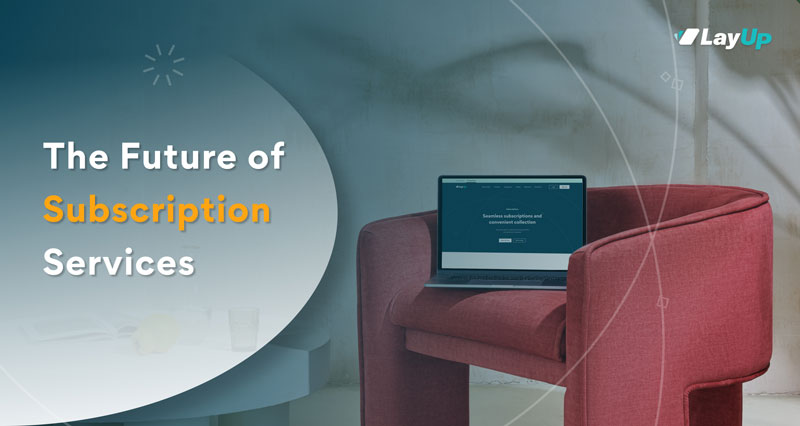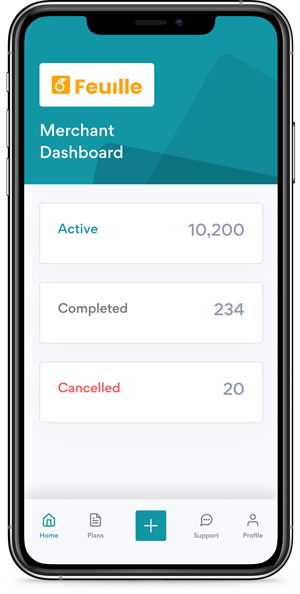The subscription economy is changing the way we consume goods and services, with more and more people opting for monthly or yearly subscriptions rather than one-time purchases. The impact of this shift in consumer behaviour will be far-reaching, as businesses across industries must adapt to meet the needs of a rapidly evolving market.
With new technology enabling companies to offer customers flexible payment plans, personalised experiences, and improved customer service, the future of the subscription economy looks bright. This article will explore how businesses can leverage these changes to stay ahead of their competitors and remain successful in an increasingly competitive landscape.
How the subscription landscape looks today
The landscape of subscription services looks vastly different than it did just a few short years ago, and the effects of this new economy continue to be felt throughout the world. The number of subscription services available today is staggering, and they offer customers convenient access to goods and services with just the click of a button. The convenience factor combined with an emphasis on affordability have made subscription models incredibly attractive for businesses as well as consumers.
However, despite its impressive growth so far, there are still questions about how far the subscription economy can really go in terms of its size and reach. Will it replace traditional retail models entirely? Or will it exist side-by-side with them in a new economy? The answers to these questions will determine the future of the subscription economy, and thus, it is essential that we understand what drives this particular economic model and how it may continue to evolve. Understanding the underlying mechanics of the subscription economy can help businesses make informed decisions about their own strategies moving forward. The potential for growth in this area is immense, and those who are able to capitalise on it have the potential to benefit greatly from its success. The future of the subscription economy is an exciting one indeed. The only question left to answer is: what comes next?
The possibilities are endless.
The evolution of the subscription model
The subscription economy has grown exponentially in recent years, with more and more companies offering their products or services via a subscription. The model is becoming increasingly popular among consumers due to the convenience it offers and the ability to access goods and services without having to make an upfront purchase. The evolution of this model has been driven by technology advancements that have allowed businesses to quickly scale up operations as well as changes in consumer behaviour around purchasing habits. This shift towards subscriptions is likely to continue into the future as companies recognise its potential for growth. As such, understanding the implications of this new business model will be essential for any organisation looking to capitalise on its advantages.
Here’s an overview.
- The Early Adopters: The subscription model of selling goods and services first became popular in the late 1990s with companies such as Netflix, Pandora, and AOL offering streaming media subscriptions.
- The Expansion: As technology advanced, more people began taking advantage of the convenience offered by subscription services. This led to an increase in other types of products and services being offered as subscription-based models, from meal delivery kits to razor blades sent monthly for a low price.
- The Emergence Of New Industries: The emergence of new technologies such as artificial intelligence (AI) has allowed for further advancements in how consumers access goods and services on a recurring basis. AI is now used by many businesses to predict customer needs so they can offer tailored subscriptions based on those needs. Additionally, industries such as healthcare have been transformed through the use of software that allows patients to monitor their health remotely via devices or apps connected directly to their doctor’s office or hospital system.
- The Growth Of Subscription Services: Over time, more businesses have begun experimenting with different forms of subscription business models including freemium models – where customers receive basic features at no cost but must pay for additional features – as well as usage-based pricing, which charges customers based on how much they use a particular product. The success of these models has led to the growth of companies offering subscription services and an increase in overall consumer spending as people look for more value in their purchases.
- The Future Of The Subscription Economy: Going forward, it is expected that the popularity of subscription-based business models will continue to grow as companies explore new ways to provide convenience and value to their customers. As technology continues to advance, more industries are likely to adopt this type of model and provide innovative solutions for consumers who are looking for easier access to the products and services they need. The future of the subscription economy is sure to be an exciting one.
- Why the subscription model is the future and how to make the switch
The subscription model is quickly becoming one of the most popular business models in today’s economy. The idea of paying a set fee each month to get access to products or services has become an attractive option for customers and businesses alike. The subscription economy offers numerous benefits, which are discussed below.
For customers
For customers, subscribing to a service brings convenience and cost-savings. Subscriptions can be tailored to fit individual needs, allowing people to purchase what they need and nothing more. Subscription services also offer discounts on goods that would otherwise be too expensive for consumers to purchase outright. As such, subscriptions enable customers to have access to high-end products that they may not normally be able to afford.
For businesses
Businesses benefit from the subscription economy in a number of ways. The recurring revenue model provides stability for business owners and allows them to plan ahead with more certainty. The subscription model also enables businesses to develop longer-term relationships with their customers, providing an opportunity to build loyalty over time. As customers become more familiar with the brand and product offerings, they are likely to increase their spending on subscription services over time.
Making the switch
Making the switch from traditional sales models to subscription-based services requires careful planning and consideration. Businesses should evaluate their current offering and determine which products or services can be moved into a subscription model. Doing so will allow companies to benefit from the advantages offered by the subscription economy while avoiding potential pitfalls that may arise when making such a transition.
The future of the subscription economy is looking bright and businesses that embrace this model can reap numerous rewards. The key to success lies in understanding how the subscription model works, assessing which products are suitable for it, and being prepared to make adjustments as needed when making the switch. With careful planning and execution, businesses can benefit from the advantages offered by the subscription economy and set themselves up for long-term success.
How subscribing to the idea of a subscription-based model will help your business
The subscription economy is here to stay, and businesses should be aware of the impact it can have on their success. The concept of subscribing to services or products instead of buying them outright has become increasingly popular among consumers and businesses alike.
Subscription-based models offer a number of advantages that make them attractive to customers and beneficial for businesses. The ability to pay regular amounts over time instead of paying upfront makes these services more accessible, while recurring revenue helps create a steady stream of income for companies. Additionally, subscription services allow businesses to understand their customer base better, gather valuable consumer data, and improve their customer service offerings by providing personalised experiences.
The savings
By utilising subscription-based models businesses can reduce costs associated with acquiring new customers, as well as minimise overhead costs due to the predictability of their revenue. The data collected from customers can also be used to offer targeted promotions and discounts for repeat business, further increasing customer loyalty.
So, what’s next?
The subscription economy is here to stay and organisations should take advantage of the benefits by leveraging subscription services into their business models. The advantages extended to both consumers and businesses make it an attractive option that could potentially improve customer relations while reducing costs. The future of the subscription economy has never looked brighter and companies should strive to remain competitive in this new digital landscape.
By subscribing to the idea of a subscription-based model, businesses will be able to reap numerous rewards that will help them succeed, and thrive, in today’s market.
And LayUp should be your starting point. Our subscription model is the smart way to collect recurring payments, and scale your business.


